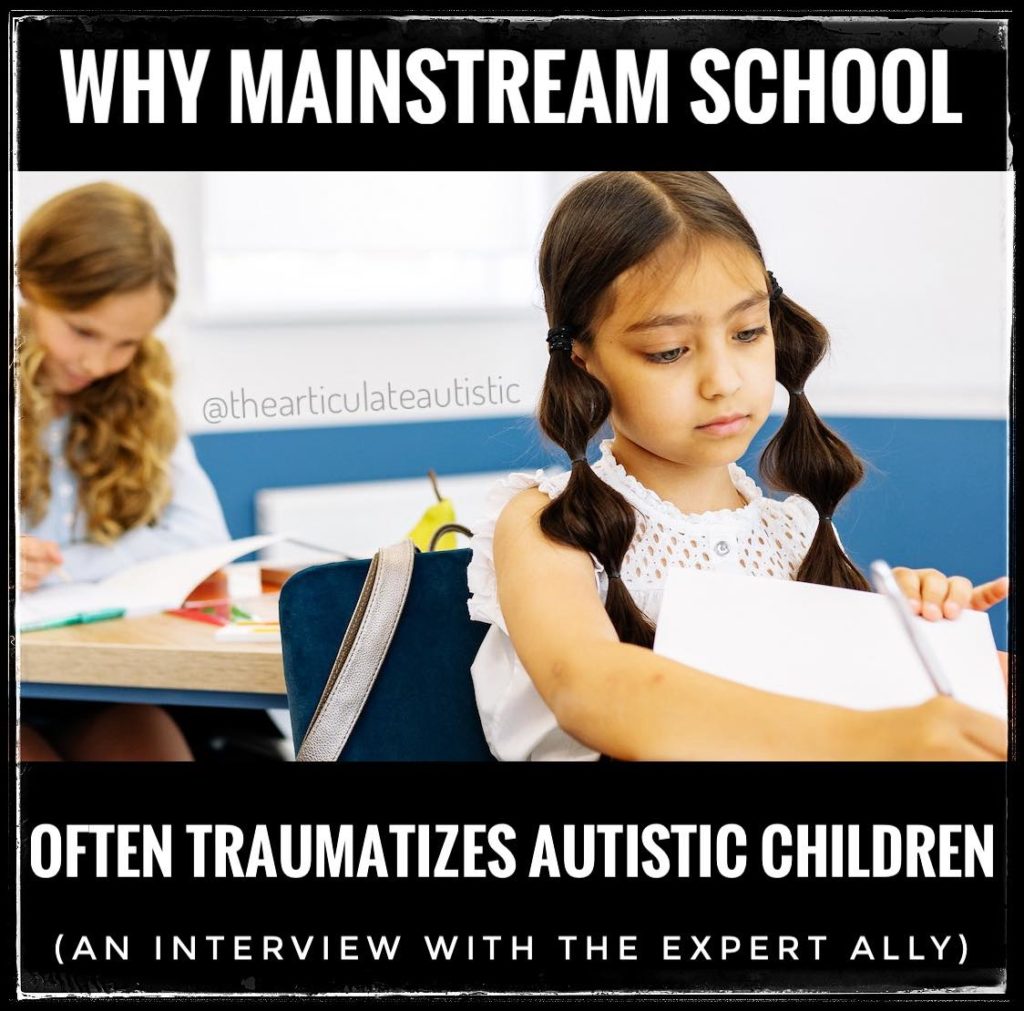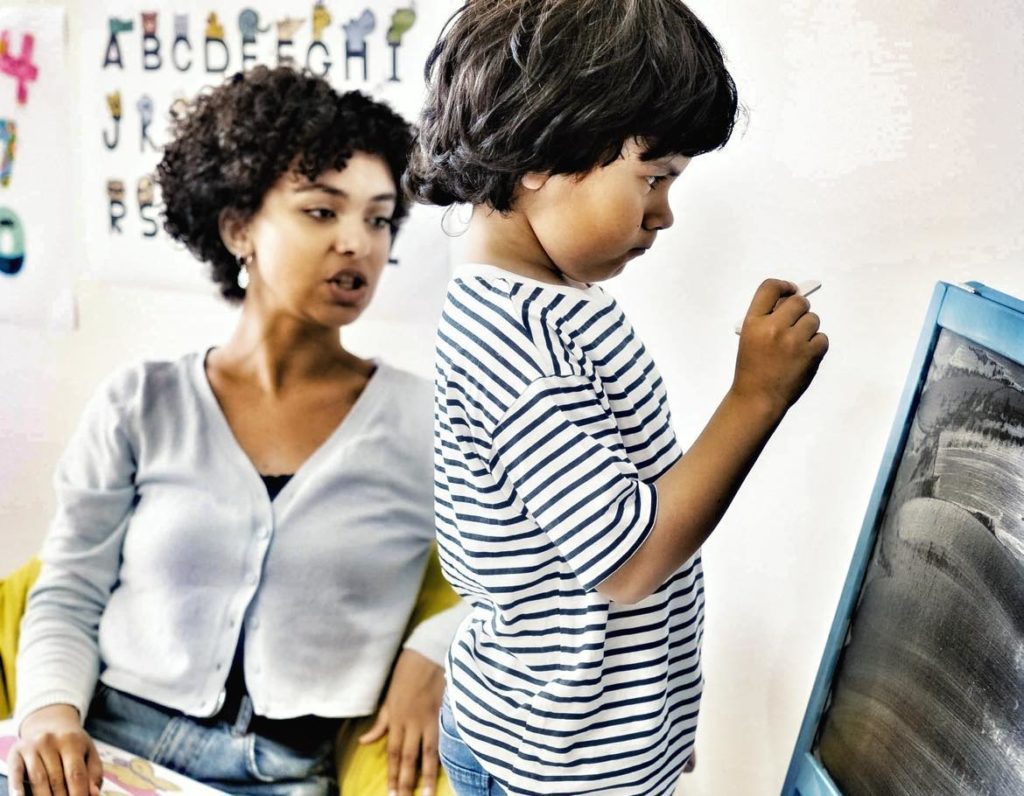Why Mainstream School Often Traumatizes Autistic Children – Interview With The Expert Ally

Yulika Forman, PhD, LMHC is a powerhouse of information and a staunch advocate for the autistic and neurodivergent community. Just one look at her Instagram page will show you just how knowledgeable she is when it comes to understanding and explaining the deep inner workings of the autistic mind–and she’s neurotypical!
She’s quite busy, so when I asked her for an interview, I promised I’d limit my questions to only two, but she took the time to deliver some really comprehensive answers, and I’m grateful she agreed to share her insight here on my blog.
Whether you work with autistic students, are a parent of an autistic child, or both, you need to know that mainstream school is often a very traumatizing experience for autistic children and what steps you and your school can take to mitigate this trauma, so education is a safer, more accessible experience for all brains!
Jaime A. Heidel – The Articulate Autistic:
What are the most common factors that contribute to autistic trauma in mainstream schools?
Yulika Forman – The Expert Ally
“A very general answer would be it is when an autistic child is not understood. When teachers and therapists are looking at an autistic child through the lens of their NT experience and expectations.
When no one is thinking about how the child’s individual autistic profile explains their needs, strengths, and behaviors. When the same expectations are set for everyone and the autistic student is asked to do the impossible (i.e. perform tasks for which they do not have skills or which are extremely challenging for them), tolerate the impossible (for example, deal with certain sensory aspects of the environment without accommodations), or do things that they are not interested in (for example, being forced to socialize).
Also, when their experiences and perceptions are not validated, and, on the contrary, they are challenged (i.e. this is not hard; it is not that loud; it is not important, etc.). Also, when others communicate with an autistic child in ways that do not work for them.
Another thing is that often children are not taught to say “no” or to negotiate their preferences. Their goals in schools often involve expecting compliance without any challenging behaviors.
So, when something is difficult or uncomfortable for them, their programming requires them to just bear with it without any outward indication that they are not OK.
Yulika Forman – The Expert Ally
It’s important to note that autistic kids often do not know how to communicate that they are not OK in ways other than “challenging behaviors” i.e. whining, crying, flopping, meltdown, etc. Also, the attitude of those around the child can cause trauma. Teachers and other staff can be very critical and convey to the child that they are a “problem.” There may also be teasing and bullying from classmates AND teachers, and to experience that kind of derision on a daily basis is damaging. Furthermore, when anxiety is overlooked and dismissed, autistic children spend their whole days in school feeling anxious.

Many times when an autistic child experiences challenges in school, teachers and other staff will see them as “challenging behaviors” (some people use the term “distress behavior” to reflect that it is a sign of distress and that the behavior is not intended by the child as challenging). Then these behaviors are often managed via behavioral support plans without thinking about what is causing them. For example, a child might struggle with transitions between different parts of the day, and there will be a behavioral plan to reward successful transitions and ignore “challenging behaviors” around transitions.
This is also a source of stress and can lead to eventual trauma because the child remains unsupported for their actual challenges around transitions. Instead, teachers and staff need to provide accommodations such as personalized visual schedules, heads-up before transitions, a choice of a stopping point, a clear job or task for the transition, extended transition, etc.
If educators can put these accommodations in place, the child can be successful and their neurology will be respected. We will be teaching the child how to transition while respecting their own needs. However, if educators approach things strictly from a behavioral standpoint, they’ll teach no actual coping skills and set the child up to fail as they will only be able to ignore their own discomfort for so long.
In fact, teaching a child through behaviorism to ignore their own discomfort, thoughts, feelings, traits, etc. is another example of how trauma develops for autistic children in mainstream schools.
When autistic kids are not given the right support and accommodations in school, they fail again and again, and they start thinking of themselves as incapable–as failures. Of course, this too can lead to trauma.
The sensory environment and logistics of mainstream schools are other important factors. Classrooms can be very hectic and loud; there are bells and sometimes fire alarms, and cafeterias and school assemblies can be overwhelming. There are also many transitions and changes (substitute teachers, special days and special events, schedule changes, etc.). Other kids breaking rules. Since autistic children are prone to anxiety, they can develop a lot of anxiety around all of these things, and eventually, if anxiety and its sources are not addressed, they can develop trauma.”
The Articulate Autistic:
What can teachers and other educators do to ensure the safety and comfort of their autistic students?
The Expert Ally:
“I strongly advise educators to get informed and educated about autism, and to truly see autistic children from a strength-based perspective. To learn to understand the connection between autistic traits and how a child behaves, learns, communicates, etc. To understand that accommodations are not just a legal right–they are what helps a child be successful, and there is no downside to accommodations, there is no reason to “wean” off them, instead, we should teach the children what accommodations they need and how to ask for them. I also advise that mainstream schools always have an autism expert on their team to help the team understand the child better and identify the right supports, and to understand that autistic children hide many of their challenges, including anxiety.

That autistic children have a particular learning style both for academic and for social learning, and educators need to accommodate them. To see a human being, rather than a diagnosis and a sum of challenges, in each child.
To think of what skills the child needs as a developing individual and future adult–rather than how to make the autistic child less “noticeable” or how to make their behavior more convenient to everyone.
To always foster a positive identity as an autistic individual by encouraging and accepting self-advocacy.”
Contact the Author:
If you’re like to get in touch with The Expert Ally, check out her website here, her Instagram page here, and learn more about Project Hope, a fundraising effort to send free sensory items to autistic children in Ukraine.



I love this article. Everything said in here is very true. What we need is to build a safe environment in which we meet the autistic child where they are at.
Great article, as a father of a daughter with autism and a TA/Job Coach in a special needs transition class. It’s important to treat each child as individual, not their diagnosis. Lots of great points. Thank you.
I think teachers should have to go to a course and pass it in order to be qualified, dealing with different types of Autism and how to deal.